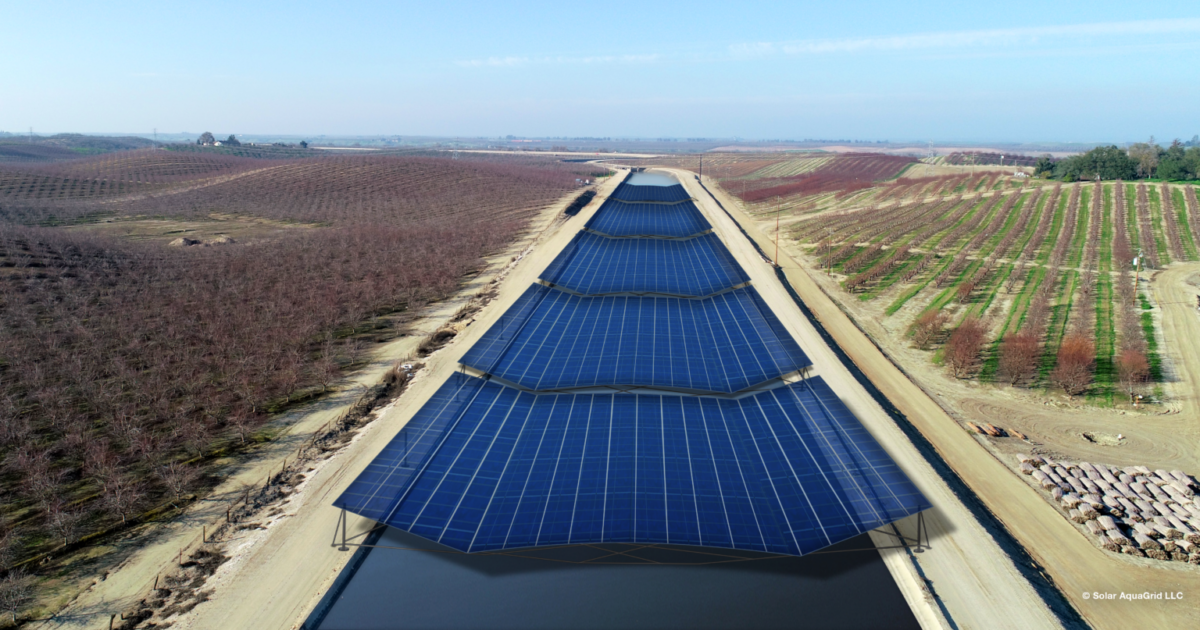From pv magazine USA
Gila River Indian Community said it has signed an agreement with the US Army Corps of Engineers to install solar panels over irrigation canals on its land south of Phoenix, Arizona.
The first phase of the project will cover approximately 1,000 feet (304.8 meters) of canal, cutting down on water losses from evaporation. The project is expected to demonstrate the feasibility of solar-topped canals, potentially leading to additional miles of solar canals for the community in subsequent phases. The Army Corps is expected to complete the first phase of the project in 2025.
The cost of the first phase of the project is $6.744 million, adding 1 MW of solar capacity while reducing evaporation in the canal. The project is supported by a $517,000 grant from the Bureau of Reclamation. Funding for the second phase of the project is also expected to come from the Bureau of Reclamation, which is implementing a grant program established by Congress to pilot solar canals.
“This first pilot will break new ground and further the Community’s role as stewards of our shudag (water) and in keeping with the Community’s tradition of bringing innovation to irrigation systems throughout their lands,” said Gila River Indian Community governor Stephen Roe Lewis.
Earlier this year, a coalition of more tan 125 groups urged the US Interior Department and the Bureau of Reclamation to evaluate the efficacy of solar canals. The request, signed by many leading climate and environmental groups, highlighted the opportunity to cover 8,000 miles of open-air canals with solar capacity. An estimated 25 GW of renewable energy, enough to power nearly 20 million homes, could be installed on these locations, the group said.
Popular content
“The Bureau of Reclamation and the states dependent on the Colorado River are already considering unprecedented water cuts to protect the water supplies for 40 million people who rely on the river,” said the letter.
The solar canal project implemented by the Gila River community is among the first in the United States to break ground. It is expected to serve as an example for other regions challenged by water conservation and clean energy goals.
For example, California’s Central Valley Project, a large canal system, alone uses approximately 1 billion kWh of electricity annually to pump water. Bringing solar power closer to these systems would offer an efficient system for moving water, displacing the diesel generators used today.
“Given the Bureau of Reclamation’s long history of creating hydroelectric power, the generation of gigawatts of solar power on its canals would be a purely additive benefit, and could even help address shortfalls in electricity generation as when hydroelectric facilities are unable to operate due to low water levels,” said the letter.
Installing solar on canals is gaining popularity worldwide. Projects in California, India, Spain, and France are underway, with many packing in large utility-scale capacity.
This content is protected by copyright and may not be reused. If you want to cooperate with us and would like to reuse some of our content, please contact: editors@pv-magazine.com.



2 comments
By submitting this form you agree to pv magazine using your data for the purposes of publishing your comment.
Your personal data will only be disclosed or otherwise transmitted to third parties for the purposes of spam filtering or if this is necessary for technical maintenance of the website. Any other transfer to third parties will not take place unless this is justified on the basis of applicable data protection regulations or if pv magazine is legally obliged to do so.
You may revoke this consent at any time with effect for the future, in which case your personal data will be deleted immediately. Otherwise, your data will be deleted if pv magazine has processed your request or the purpose of data storage is fulfilled.
Further information on data privacy can be found in our Data Protection Policy.